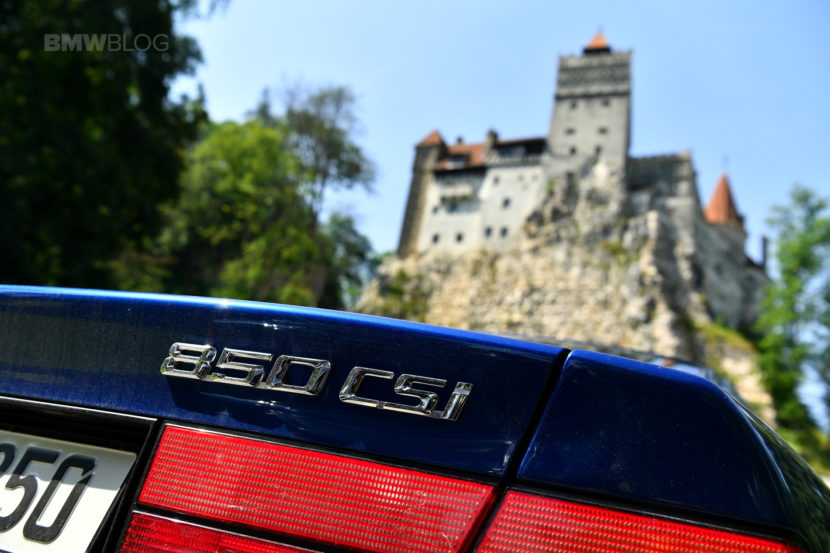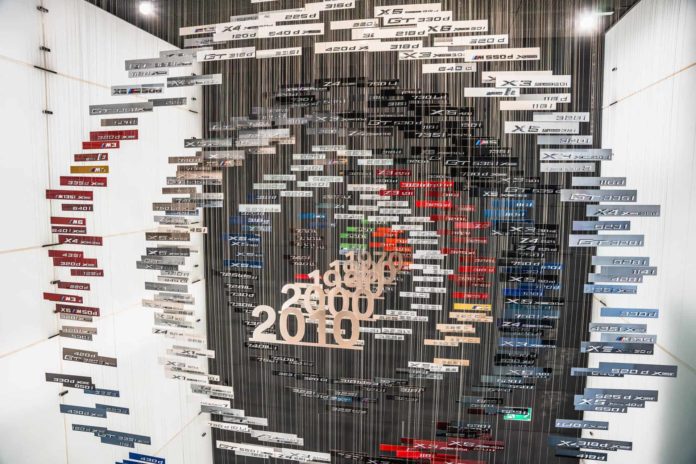Through the years, BMW has introduced and discontinued a number of nameplates, naming conventions, and trim levels. Keeping it all straight can be a bit of a hassle – even for enthusiasts. We’ve got you covered – here’s BMW naming through the years, explained.
Classic BMW Naming Conventions

So, let’s start at the very beginning. Early on, BMW’s naming was a lot more confusing than it is today. The first car BMW brought to customers was the BMW 3/15 PS. “PS” stood for the German equivalent of “horsepower,” and the 3 stood for how much of that horsepower could be considered taxable. BMW took a number of approaches to naming in the decades that followed, including a few models that got actual, honest-to-goodness names. The final one was the BMW Isetta, produced from 1962. BMW started naming models based on engine displacement beginning with the Neue Klasse models – i.e., the 2002 sported a 2.0-liter. The “02” at the end designated the number of doors. Four-door models typically sported a “00” suffix.
BMW’s naming habits started more closely aligning with what we see today in the 1970s. The 520i was the first that used a badge that followed the cleaner Series-followed-by-displacement convention that many of us know and love today. Also introduced around this time were ultra-sporty CS (Coupe Sport) and CSL designations (Coupe Sport Lightweight [construction]).
Modern BMW Naming Conventions


The 520i introduced a few details into the mix. First, model numbers. The 5 Series, followed by the 3 Series in 1975, replaced the Neue Klasse cars, and things got simplified. The first number denoted the Series of the vehicle – which, over time, took on a “smallest-to-biggest” scale ranging from the 1 Series to the 7 Series. Following the Series comes engine displacement. A model like the original 520i, for example, featured a 2.0-liter engine. Then, there’s fueling.
One now-repurposed suffix you might see on older BMW vehicles is the “e” designation, as in 325e. These “eta” motors optimized low-end torque. The idea was to cater to the American motorists who were accustomed to torquey V8s. They’re also fuel-injected, despite the “i” after other models that ostensibly stands for fuel injection. If you see a “d” or “e” at the end, it’s a diesel or hybrid model, respectively. Of course, much of this naming changed with turbocharging, new models, and the introduction of BMW SUVs.
BMW dubbed their SUV models the X Series, likely to keep familiarity strong with the xDrive all-wheel drive nomenclature they’d already introduced. Naming followed a similar logic that it did on the other models, with a number from one through seven denoting size and luxury. Trim levels, like xDrive30i, denoted drivetrain layout and engine displacement.
Alongside all these changes, BMW also introduced new body styles. The ti/tii models – standing for Turismo Internazionale and Turismo Internationale Iniezione, respectively – translated to Touring International and Touring International Injection in Italian. You can find them on models from the 2002 to the E36 compact and beyond. Similarly, GT models – Gran Turismo – were introduced bridging the gap between sedan and wagons. Long wheelbase – L models – arrived for shoppers who wanted to be chauffeured rather than drive themselves.
BMW M Models and Naming Conventions


The first BMW M badge appeared on the M1, but it wasn’t until the BMW M535i appeared in 1979 that BMW Motorsport became a producer of series production cars. The BMW M5 and BMW M3 followed, again, with similar naming conventions running parallel to non-M variants. We saw GTS (Grand Touring Sport, presumably) models crop up in the later generations, followed by a reimagination of what CS means. Today, it stands for Competition Sport rather than Coupe Sport. CSL is now “Competition, Sport, Lightweight.”
Future and EV BMW Naming Conventions


With the widespread introduction of turbocharged models in the late 2000s, BMW’s names started to see significant changes. The last two numbers no longer definitely pointed to engine displacement. Later models like the 335i, 530i, and M550i have little relation to their engines. Oh, and supplemental M badges started appearing on the range-topping trim of many cars, to denote their supplemental sportiness.
BMW has recently announced that they’re dropping the “i” from the end of future gas-powered models, too. So, that’s a big change. The first one is the 1 Series, appropriately, so you’ll only see models like the BMW 120 and BMW M135. Furthermore, models like the i4 and iX designate full electrification by their “i” prefix. The “e” no longer refers to eta engines – now it’s for hybrid power. A notable exception to both rules is the BMW i8 – a hybrid. As the EV lineup grows, you’ll see names like the iX2, iX3 – which are already available in some markets – and more.
What’s in a Name, Anyway?


While we did our best to touch on the most common names, we invariably missed some that didn’t fit nicely into the timeline. The CSi suffix briefly existed after the Neue Klasse cars left production, which stood for Coupe Sport Injection. The extremely limited-production M3 CRT boasted Carbon Racing Technology, an abbreviation yet to appear anywhere else. Ci and iS, too, have gone the way of the dodo. The former was a coupe and convertible designation; the former denoted Sport-Package coupe cars. Finally, the Z Series is a run of two-seater coupes and convertibles made from 1990-ish into the present day.
BMW’s abbreviations are varied and, sometimes, inconsistent. Hopefully we made it a little easier to stumble your way through it.

